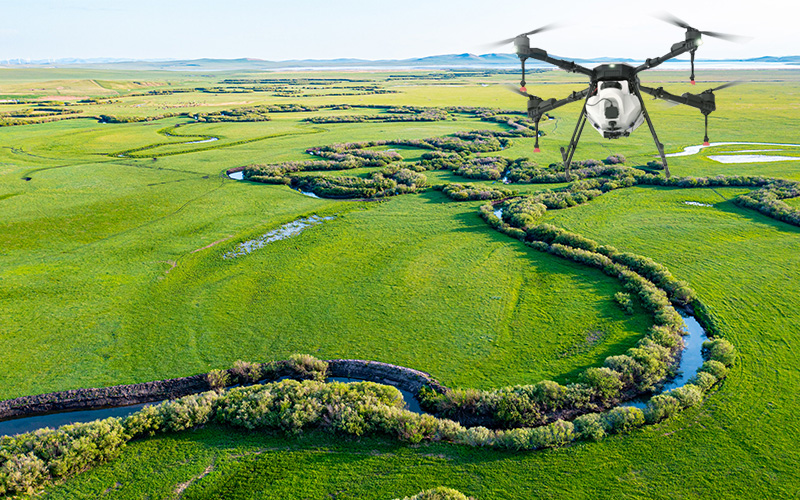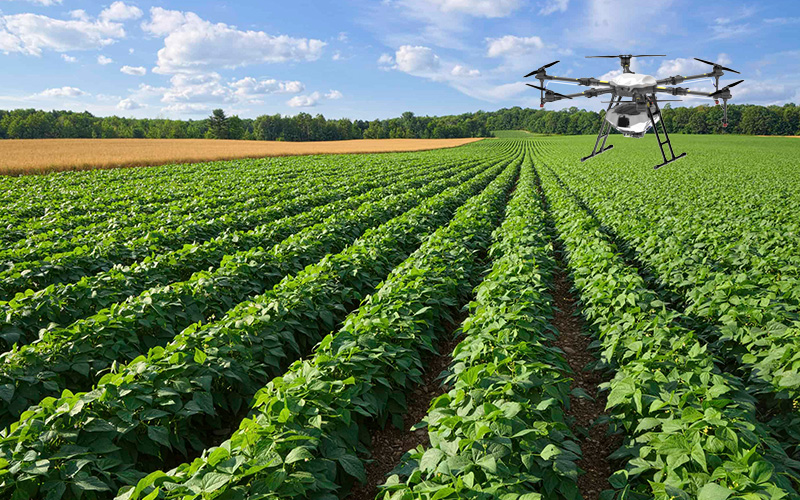By : TZX UAV
Click : 5137
Agricultural drones are indeed presenting new opportunities for the low-altitude economy. The integration of drones into agricultural practices is not only transforming traditional farming methods but also opening up new avenues for economic growth and innovation. Here's a detailed exploration of how agricultural drones are contributing to the low-altitude economy:

1. Expansion of Agricultural Productivity
Precision Agriculture: Agricultural drones equipped with advanced sensors and cameras can collect detailed information about crop health, soil conditions, and weather patterns. This data allows farmers to make more informed decisions about planting, fertilizing, and pest control, leading to increased crop yields and reduced waste.
Efficient Pest Management: Drones can be used for precise pesticide application, reducing the amount of chemicals used and minimizing environmental impact. This targeted approach also leads to better pest control outcomes.
2. New Business Models and Services
Drone-based Services: The growing demand for agricultural drones is creating new business opportunities for drone manufacturers, service providers, and data analysts. Companies are offering drone-based services such as crop monitoring, pest control, and precision farming consultations.
Value-added Products: Farmers can now offer value-added products such as precision-farmed crops, organic produce, and data-driven agricultural insights to consumers and businesses.
3. Economic Growth and Job Creation
Increased Investment: The agricultural drone industry is attracting significant investment from venture capitalists, private equity firms, and government agencies. This investment is fueling innovation and expanding the market for agricultural drones.
Job Creation: The growth of the agricultural drone industry is creating jobs in manufacturing, service, and data analysis. As the industry matures, it will continue to generate employment opportunities in various sectors.
4. Innovation and Technological Advancements
Continuous Improvement: Manufacturers are continually improving the design, functionality, and efficiency of agricultural drones. Advances in battery technology, sensors, and AI algorithms are making drones more reliable and easier to use.
Integration with Other Technologies: Agricultural drones are being integrated with other technologies such as IoT, big data analytics, and AI to create comprehensive farming solutions. This integration is leading to more efficient and sustainable agricultural practices.

5. Policy and Regulatory Support
Government Initiatives: Governments around the world are recognizing the potential of agricultural drones and are implementing policies to support their use. This includes providing funding for research and development, establishing regulatory frameworks for safe drone operation, and promoting the adoption of drone technology in agriculture.
International Cooperation: There is increasing cooperation among countries to develop standards and best practices for the use of agricultural drones. This cooperation is facilitating the cross-border trade of drones and related services.
Challenges and Opportunities
While agricultural drones present significant opportunities for the low-altitude economy, they also face challenges such as regulatory barriers, technical limitations, and public acceptance. However, ongoing advancements in technology and policy are addressing these challenges, making agricultural drones more accessible and effective.
Agricultural drones are a transformative technology that is presenting new opportunities for the low-altitude economy. They are expanding agricultural productivity, creating new business models and services, driving economic growth and job creation, and fostering innovation and technological advancements. With continued support from governments and industry stakeholders, agricultural drones have the potential to revolutionize the agricultural sector and contribute to sustainable economic development.
